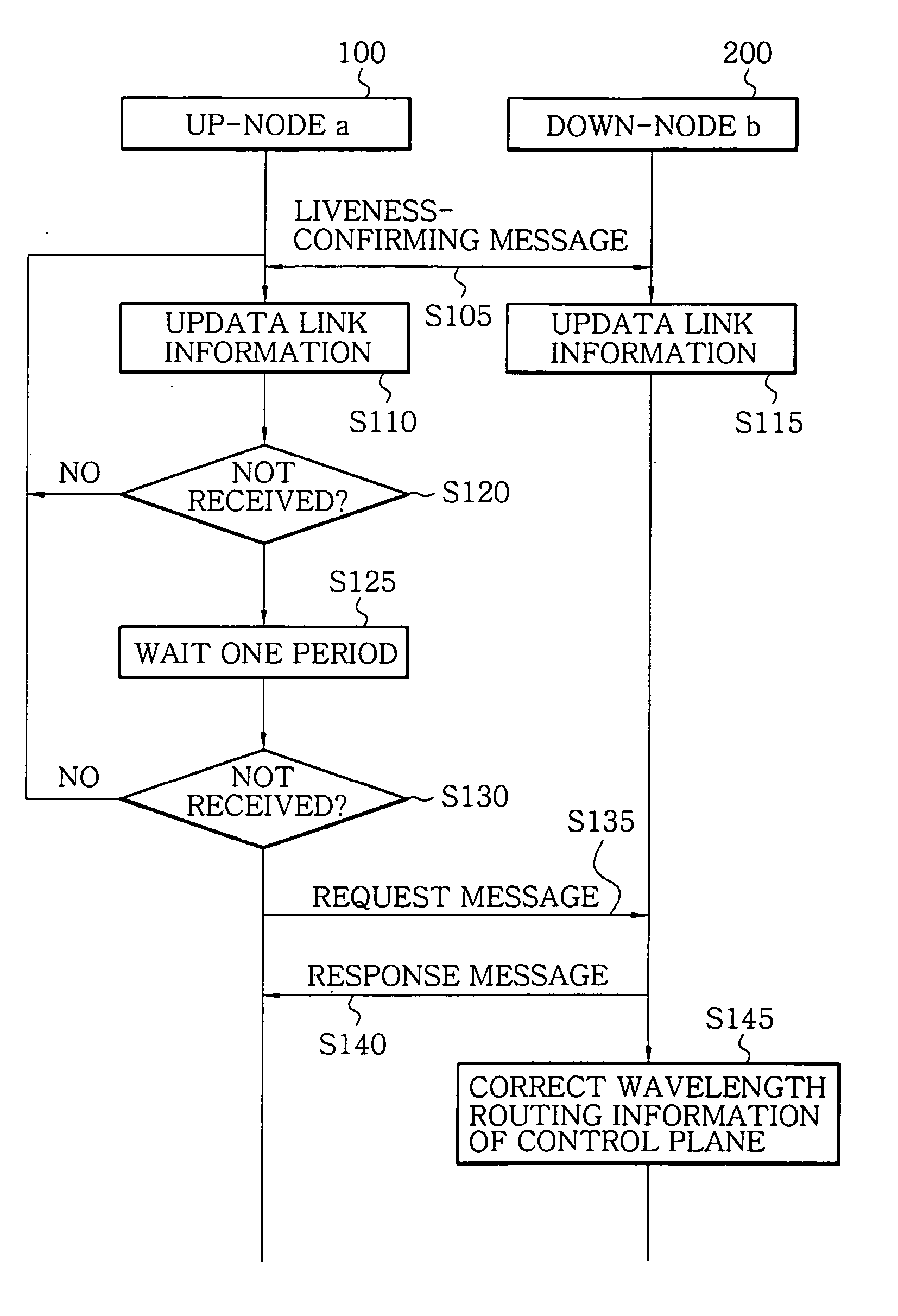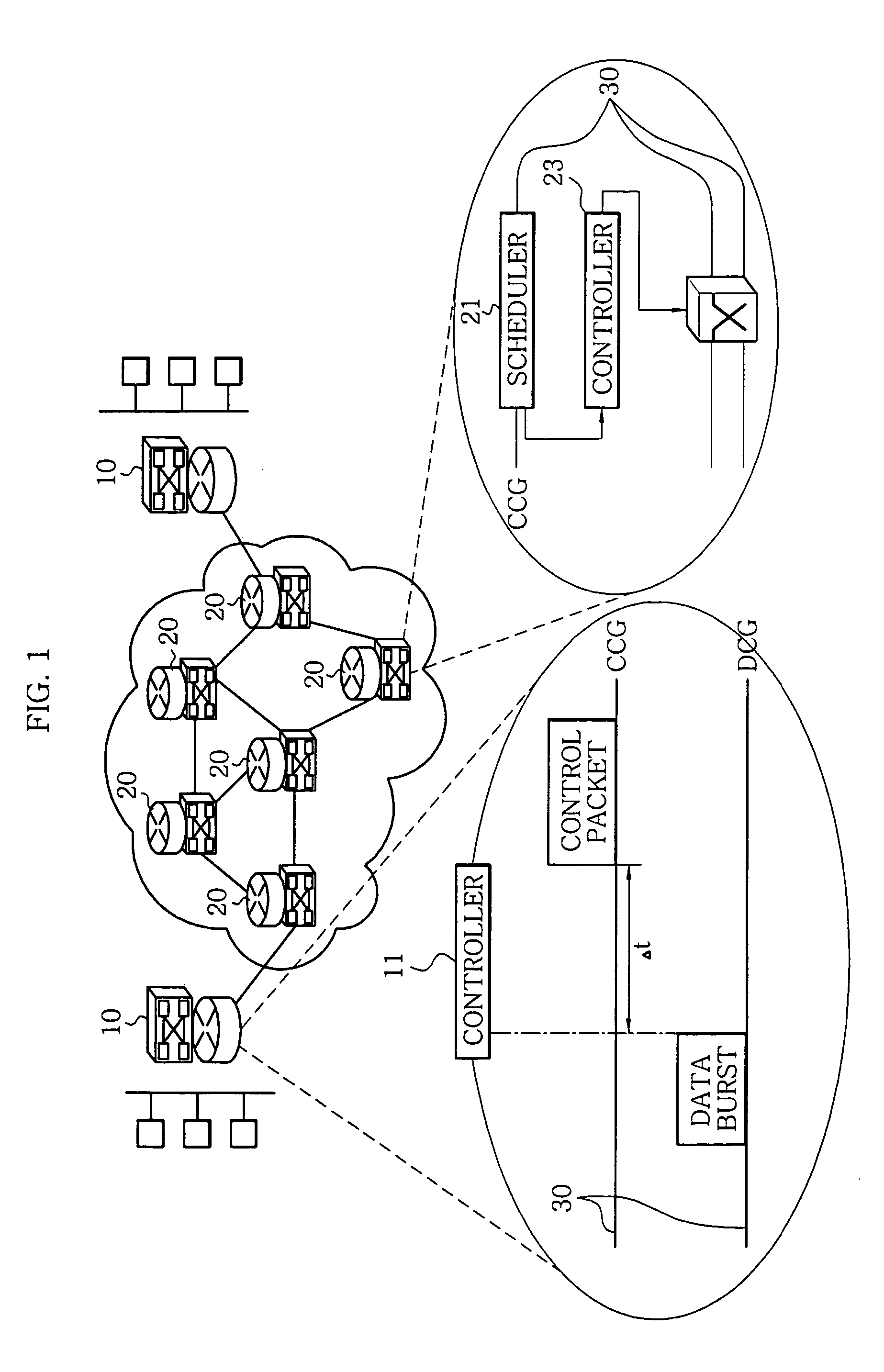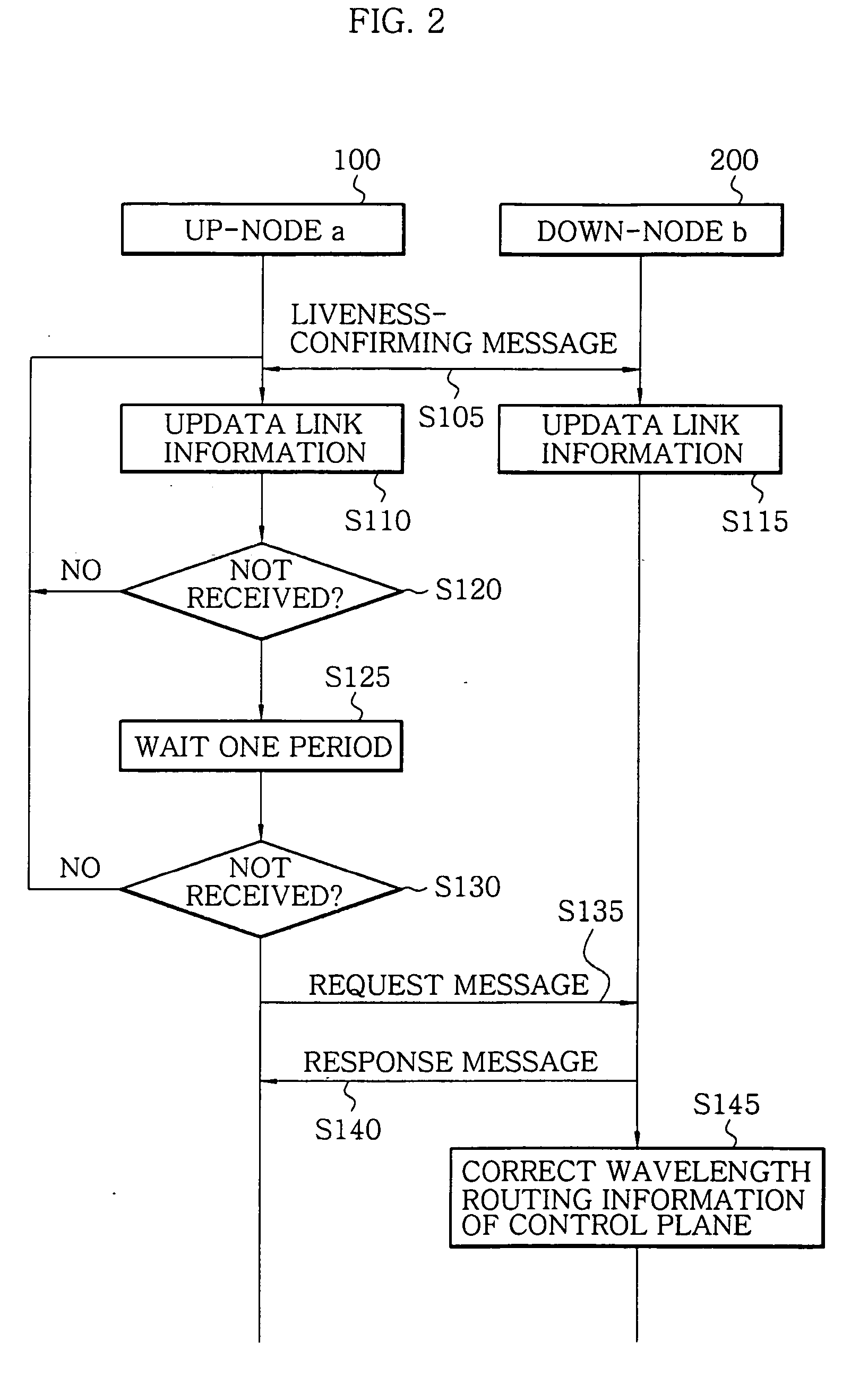Method for protecting and restoring link using optical label merging and dynamic resource sharing with network load
a technology of dynamic resource sharing and optical label, applied in the field of protecting and restoring links, can solve the problems of little or no research in the protection and restoration field, ineffective techniques, and longer current switching time of optical devices, so as to improve network efficiency, high channel efficiency, and high reliability.
- Summary
- Abstract
- Description
- Claims
- Application Information
AI Technical Summary
Benefits of technology
Problems solved by technology
Method used
Image
Examples
Embodiment Construction
[0030] Reference will now be made in detail to the preferred embodiments of the present invention, examples of which are illustrated in the accompanying drawings.
[0031]FIG. 1 shows the composition of an OBS network to which the present invention is applied. Particularly, FIG. 1 illustrates channel reservation and burst transmission in a DWDM-based OBS transmission network. Referring to FIG. 1, the OBS transmission network includes edge routers 10, core routers 20 and a transmission link (for instance, a DWDM multiplexing links) 30.
[0032] The transmission link 30 is divided into a control channel group CCG for channel reservation and a data channel group DCG for optical burst transmission. The edge routers 10 assemble data to be transferred and correspond to terminating nodes of an optical transmission system. The core routers 20 are intermediate nodes connected between the edge routers 10.
[0033] Each edge router 10 generates a burst based on a burst destination and calculates the...
PUM
 Login to View More
Login to View More Abstract
Description
Claims
Application Information
 Login to View More
Login to View More - R&D
- Intellectual Property
- Life Sciences
- Materials
- Tech Scout
- Unparalleled Data Quality
- Higher Quality Content
- 60% Fewer Hallucinations
Browse by: Latest US Patents, China's latest patents, Technical Efficacy Thesaurus, Application Domain, Technology Topic, Popular Technical Reports.
© 2025 PatSnap. All rights reserved.Legal|Privacy policy|Modern Slavery Act Transparency Statement|Sitemap|About US| Contact US: help@patsnap.com



